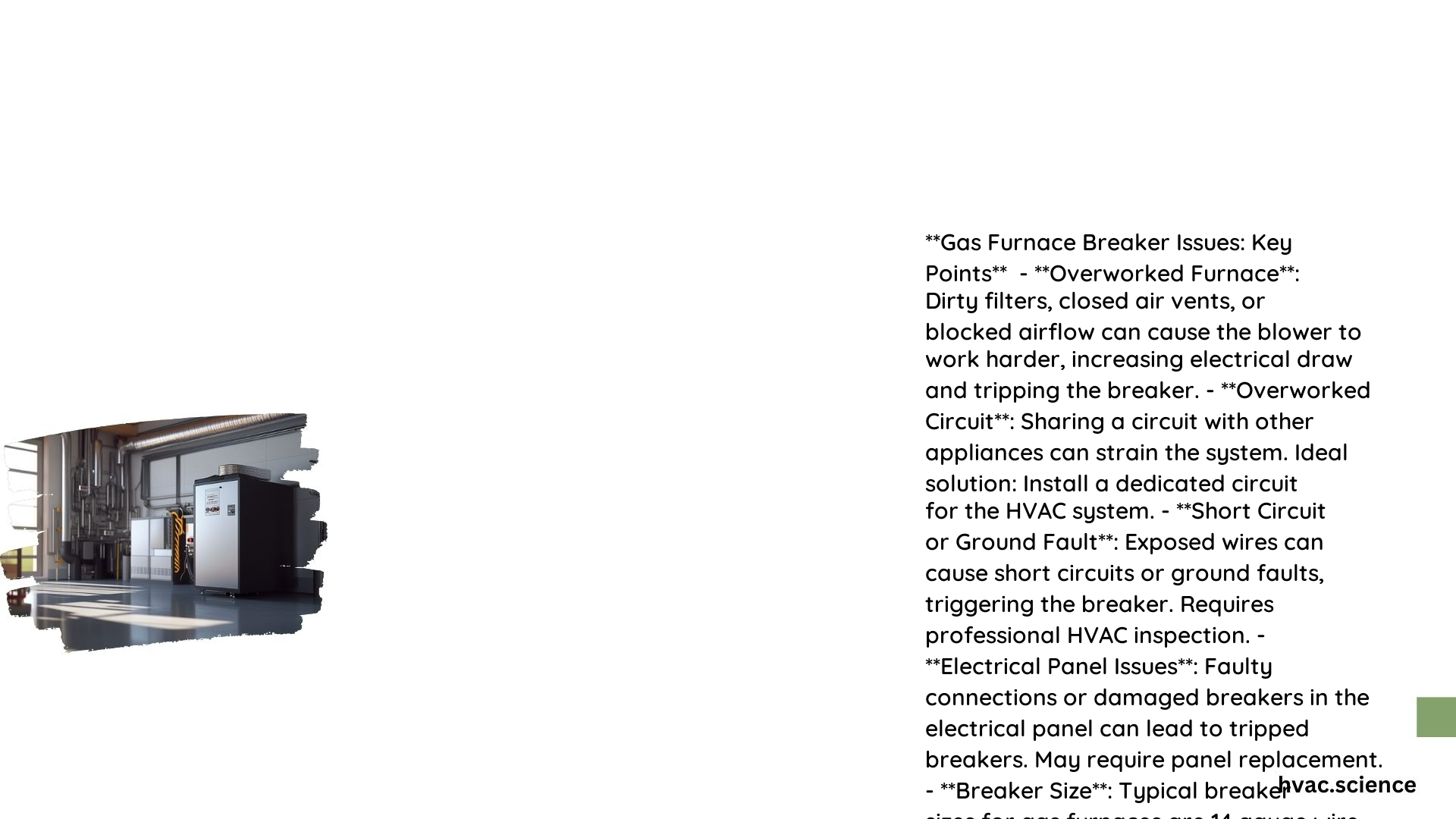Determining the Appropriate Breaker Size for a Gas Furnace
Ensuring the correct breaker size for your gas furnace is crucial for its safe and efficient operation. This article will guide you through the steps to determine the appropriate breaker size, the common breaker sizes used, and the associated costs and safety considerations.
What are the Typical Breaker Sizes for Gas Furnaces?
Gas furnaces typically require a dedicated circuit with a breaker size that matches their specific electrical power demands. The most common breaker sizes for gas furnaces are:
- 15 Amps: This is a common size for many gas furnaces, especially those with lower power requirements. A 15-amp circuit is often sufficient and is typically paired with 14-gauge wire.
- 20 Amps: Some gas furnaces may require a 20-amp circuit, particularly if they have higher power demands. This is usually paired with 12-gauge wire.
How to Determine the Correct Breaker Size for a Gas Furnace?
To determine the appropriate breaker size for your gas furnace, follow these steps:
- Consult the Manufacturer’s Guidelines: Check the furnace’s nameplate or installation manual for the specified electrical requirements. This will provide the minimum circuit ampacity and maximum fuse or breaker size.
- Determine the Amp Rating: Find out the current draw of the furnace in amps. This information is crucial for selecting an appropriately sized breaker.
- Calculate Wattage (if necessary): If the wattage is not provided, you can calculate it using Ohm’s Law: Amperes = Watts / Volts. However, for most gas furnaces, the amp rating is directly provided.
- Round Up to the Nearest Standard Breaker Size: Ensure the calculated amp rating is rounded up to the nearest standard breaker size available (e.g., 15 amps, 20 amps).
- Consider Wire Gauge: Ensure the wire gauge matches the breaker size. For example, a 15-amp breaker typically uses 14-gauge wire, while a 20-amp breaker uses 12-gauge wire.
What Tools and Devices are Needed?
To determine the appropriate breaker size for your gas furnace, you’ll need the following tools and devices:
- Multimeter: To measure the voltage and current if not specified by the manufacturer.
- Wire Gauge Tool: To verify the wire gauge.
- Breaker Panel: To install the breaker.
What are the Associated Costs and Schedules?
- Costs: The cost of a breaker can vary depending on the brand and type. On average, a 15-amp or 20-amp breaker can cost between $5 to $20.
- Schedules: The installation should be done during a time when the furnace is not in use to avoid any disruptions. It is recommended to hire a professional if you are not familiar with electrical work.
What are the Safety and Efficiency Considerations?
- Safety: Using an appropriately sized breaker ensures that the gas furnace operates within its electrical limits without risking overheating or electrical hazards.
- Efficiency: Matching the breaker size to the furnace’s electrical requirements optimizes energy consumption and prevents unnecessary strain on electrical components.
Example Scenario
If your gas furnace specifies a minimum circuit ampacity of 12 amps and a maximum fuse or breaker size of 15 amps, as mentioned in the example from the DoItYourself forum:
- Breaker Size: A 15-amp breaker would be appropriate.
- Wire Gauge: 14-gauge wire would be suitable for a 15-amp circuit.
By following these steps and considerations, you can ensure that your gas furnace is properly protected and operating efficiently.
Reference:
1. DoItYourself.com: Breaker/wiring for gas furnace – DoItYourself.com Community Forums
2. Leith HVAC: Gas Furnace Electrical Requirements – St. Charles, IL, Must Know
3. Eheatcool: Electrical Circuit Requirements for Furnace Installation.

